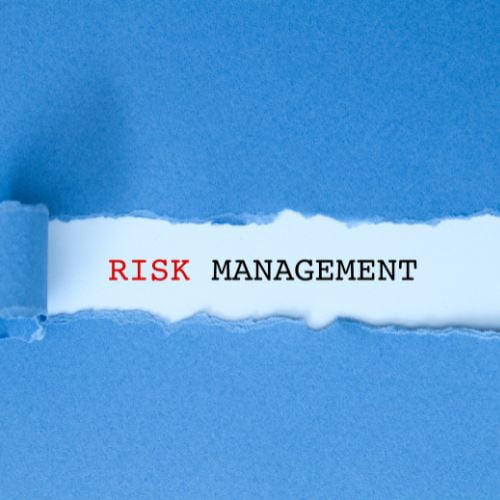What Is Risk Management?

What Is Contingency Planning?
Your Asset Register And Risk Management
Risk management comprises five techniques. Here’s a little information about what these techniques are.
- Avoidance – It is possible to avoid risks to an extent. While risks can never be completely avoided, ensuring that your vehicles are not sent on the road when there’s a major flood risk is sensible. Keeping your site’s tools under lock and key in a less salubrious area helps to avoid possible risks. Your asset register could note which areas need extra security.
- Retention – There may be occasions where retaining or accepting a risk is the best option. For example, the relevant document in your fixed asset register may mention that accepting that your gates might be vandalised is a good idea. It might be cheaper than purchasing insurance or hiring a security guard. When your business can absorb this type of loss it means you’re not making yet another insurance claim.
- Spreading – Reducing a risk is possible by spreading the risk around. For example, you could make copies of important documents and store them in your register or at another location.
- Loss prevention and reduction – Security devices such as cameras could help to reduce theft. Placing devices such as these in your building can prevent assets from going missing. Having the right insurance can also help to reduce losses. Your asset register can show where security devices are located.
- Transfer – Risk can be transferred from one business to another. Let’s imagine that a business wants to hold an event at your hotel. The business needs to show that you have added your hotel to their insurance policy, details of which can be found on your register. Should something go wrong, it’s the business that makes an insurance claim, and not you.
Your Asset Register And Contingency Planning
Contingency planning has five steps. Let’s take a look at them all.
- Programme management – Ideally, at least one member from every team will represent that team. Your register could note who this is and which of the plan’s objectives they need to undertake.
- Planning – Your team will need to conduct a risk assessment and show what impact the outcomes could have on your business. The meeting’s report can be added to your asset register so it can be accessed with ease.
- Implementation – Clearly spelling out every aspect of the contingency plan and who will be affected the most is important. The action that the affected people need to take is highly relevant. All of the details could be added to your asset register so it can be accessed should the need arise.
- Testing and exercise – If you wish to control the outcomes of an event, such as loss of power, you’ll need to ensure there is a basic supply. You’ll also need to make sure that you have all of the resources you need to get through the event. Testing your plan can help, as can making sure that every relevant person has access to it through your asset register. The details of the plan could be listed there for all to see.
- Programme improvement – Improving your programme/contingency plan is a good idea. It’s also a good idea to think about making your plan last as long as possible. If the power was to go out for months, having the tools and means (listed in your asset register) to deal with this can be a major help.
Your fixed asset register has a very important role in risk management and contingency planning. Without it, it may be impossible to access the information you need, when you need it.
Would you like to speak with an expert about your fixed asset register and its use with risk management and contingency planning? Contact us now at team@itemit.com.
The Ideal Asset Register For Risk Management And Contingency Planning
Choose a better way to track your assets
Start your free 14-day trial now
Instant access. No credit card details required.
Related articles
Why You Need Real Time Asset Tracking In Your Life
Real-time tracking is one of the most effective asset tracking solutions you can use. Read this post to find out how it can help you!
Make The Switch To Equipment Tracking Software
Know where your assets are all of the time by using equipment tracking software. Read this article now to discover additional benefits!
Tips For Creating A Hardware Inventory
Want more control over your hardware? use a hardware asset register so you can create a hardware inventory and have much more control!

